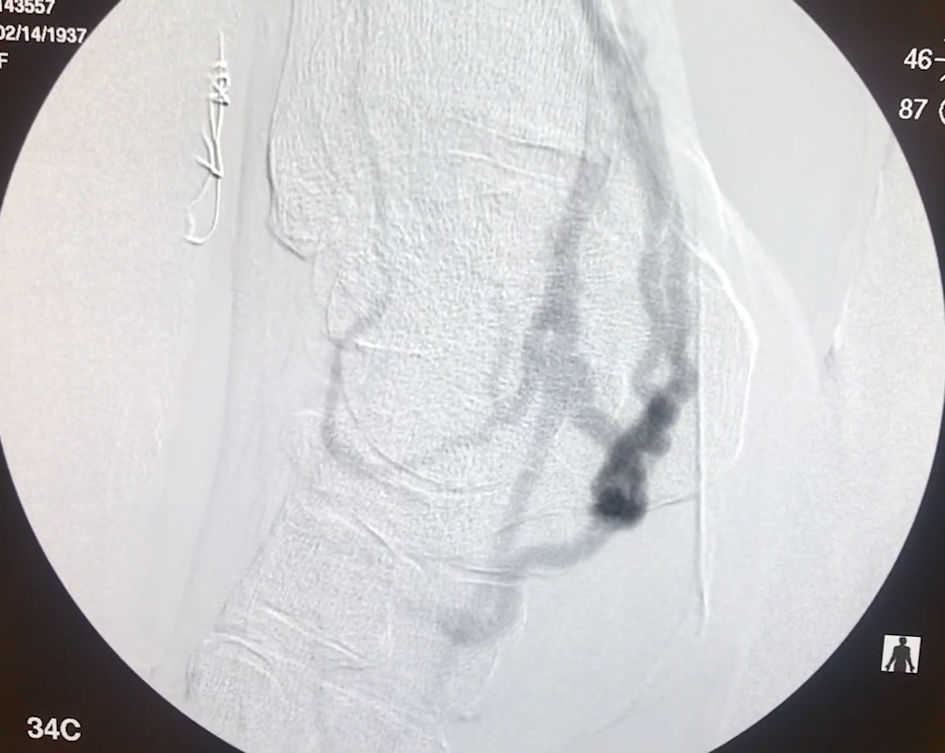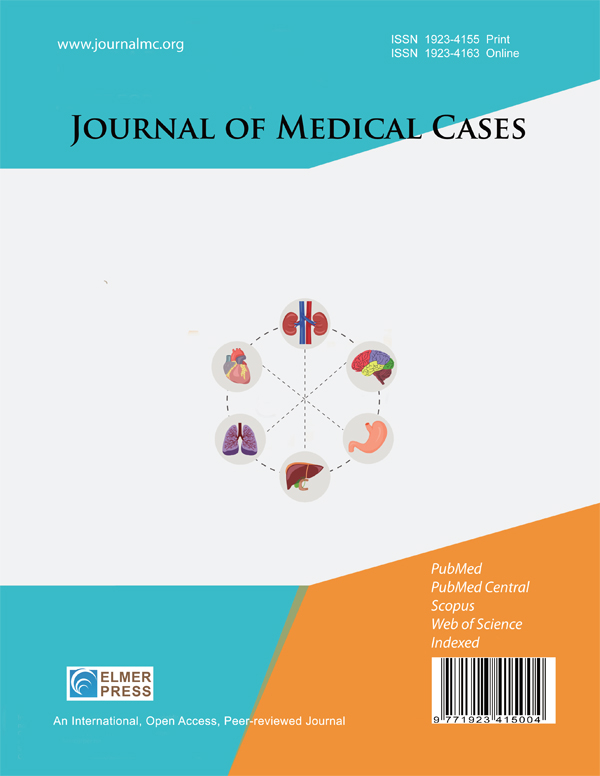Reverse Venous Arterialization Simplified Technique: A Novel Method to Correct an Inadvertently Created Femoral Artery to Peroneal Vein Bypass
DOI:
https://doi.org/10.14740/jmc5188Keywords:
Chronic limb-threatening ischemia, Venous arterialization simplified technique, Endovascular revision, Percutaneous revascularization, Limb salvageAbstract
Chronic limb-threatening ischemia (CLTI) presents a significant management challenge. We describe the case of an 80-year-old female with CLTI and dry gangrene who underwent a common femoral artery (CFA)-to-posterior tibial artery (PTA) bypass that remained patent but was inadvertently anastomosed to the peroneal vein, resulting in venous arterialization. Postoperatively, her gangrene progressed and pain worsened, prompting an offer of below-knee amputation. Upon presentation for a second opinion, angiography confirmed the patent but malpositioned bypass. Given her extensive comorbidities, she was considered a poor candidate for open revision. We report successful percutaneous correction using the venous arterialization simplified technique (VAST), which re-established flow from the bypass graft back into the arterial lumen of the PTA using a double-gunsight approach. A 5 × 100 mm Viabahn stent graft was deployed to bridge the bypass and PTA, followed by angioplasty of the PTA and plantar artery, restoring in-line perfusion to the plantar arch and digital runoff. At 2-month follow-up, the patient demonstrated marked wound healing and avoided amputation. This case underscores the role of innovative endovascular rescue techniques in high-risk patients with preserved distal runoff and limited surgical options.

Published
Issue
Section
License
Copyright (c) 2025 The authors

This work is licensed under a Creative Commons Attribution-NonCommercial 4.0 International License.










